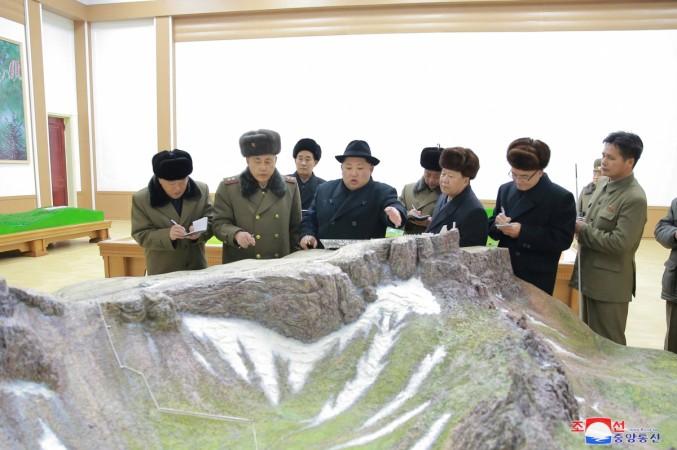
Despite facing several sanctions from South Korea and the UN and also facing the wrath of several nations including the United States, reclusive nation North Korea continues to defy logic and test nuclear weapons. After testing a hydrogen bomb in September, Pyongyang test-fired its highest-ever intercontinental ballistic missile at the end of November.
While this might be a show of power, North Korea and its leader Kim Jong un do not seem to care about what these tests are doing to the environment. It was earlier said that the mountain under which it was conducting these tests was on the verge of collapsing, and now tectonic tremors are regularly being detected in the region.
On Saturday, December 9, two minor tremors were recorded from North Korea and geologists believe that they were probably aftershocks from the tests Pyongyang has been conducting. The tremors were measured at 2.9 and 2.4 on the Richter scale, according to the USGS, which also explained that the quake was close to the Punggye-ri nuclear test site, where the country had tested the hydrogen bomb on September 3.
The same was also confirmed by Lassina Zerbo, executive secretary of the Vienna-based Comprehensive Nuclear-Test-Ban Treaty Organization, who tweeted that the tremors were "tectonic."
"They're probably relaxation events from the sixth nuclear test," a USGS official told Reuters. "When you have a large nuclear test, it moves the Earth's crust around the area, and it takes a while for it to fully subside. We've had a few of them since the sixth nuclear test."
Tremors have been recorded in the region on numerous occasions since the September test and even though Pyongyang hasn't revealed which mountain it has been carrying these tests under, researchers at the University of Science and Technology of China in Hefei, Anhui province, have reportedly measured and studied the earthquakes that are a result of these nuclear tests and believe that these are all being carried out under the same mountain.
And if the mountain does collapse, as believed by these experts, it could result in some major distress to the environment. One more test and a part of the mountain could cave in resulting in a hole, through which harmful nuclear radiations could spread to the entire region.

"We call it 'taking the roof off'. If the mountain collapses and the hole is exposed, it will let out many bad things," Wang Naiyan, the former chairman of the China Nuclear Society and senior researcher on China's nuclear weapons programme, told the South China Morning Post.
According to defectors, the reclusive nation's nuclear test site, which was once lush and rich, has now turned into a wasteland.
While Pyongyang may be rubbing other countries the wrong way with its consistent tests, it is also causing quite some damage to its citizens, who are now said to be facing several health issues. It has also been reported that babies, these days, are born with several kinds of deformities.
"I heard from a relative in Kilju that deformed babies were born in hospitals there," a defector told South Korea newspaper Chosun Ilbo, according to Daily Mail. Defectors have also said that trees are not able to sustain in the area and most of them die due to contamination.

















